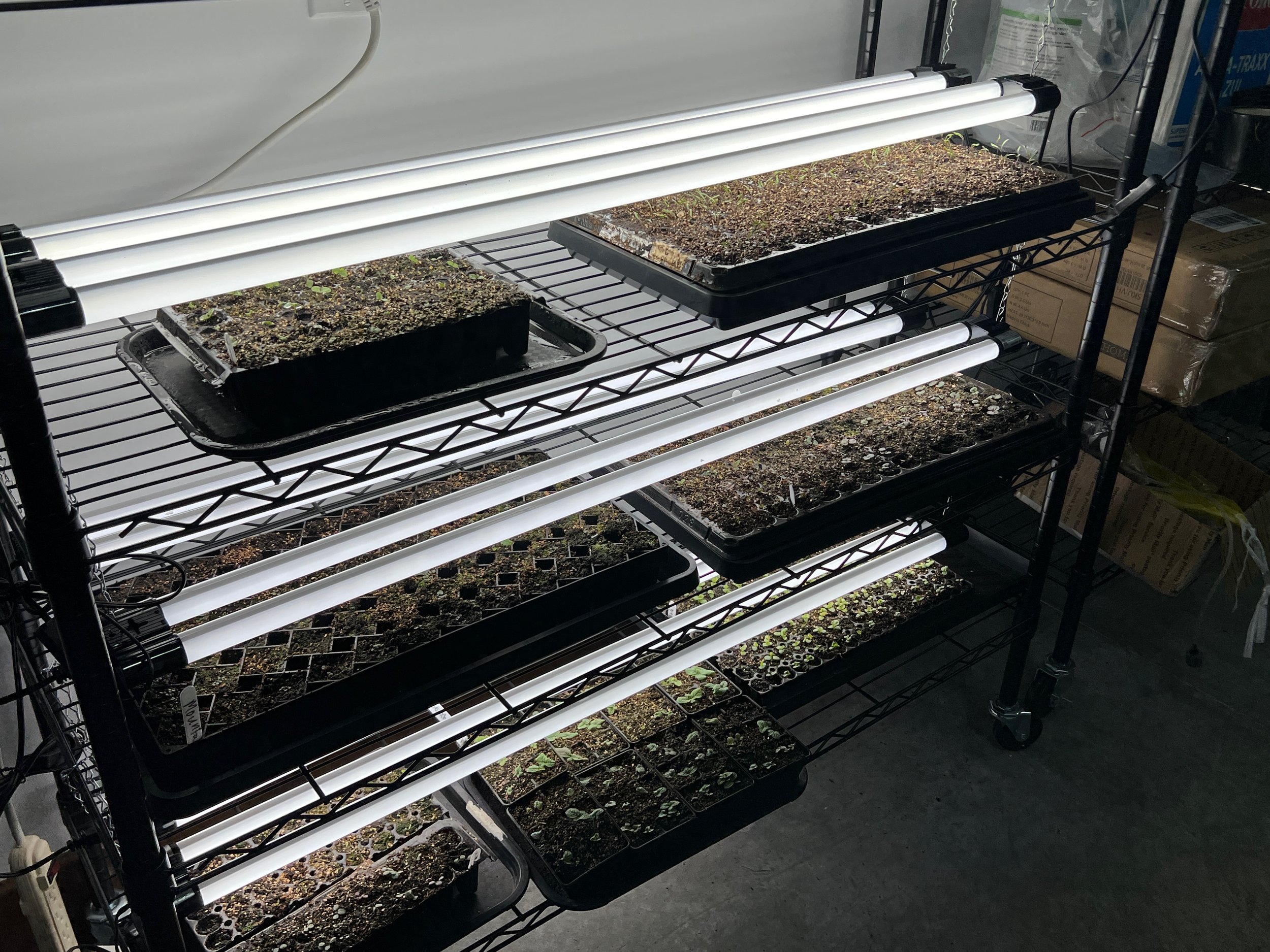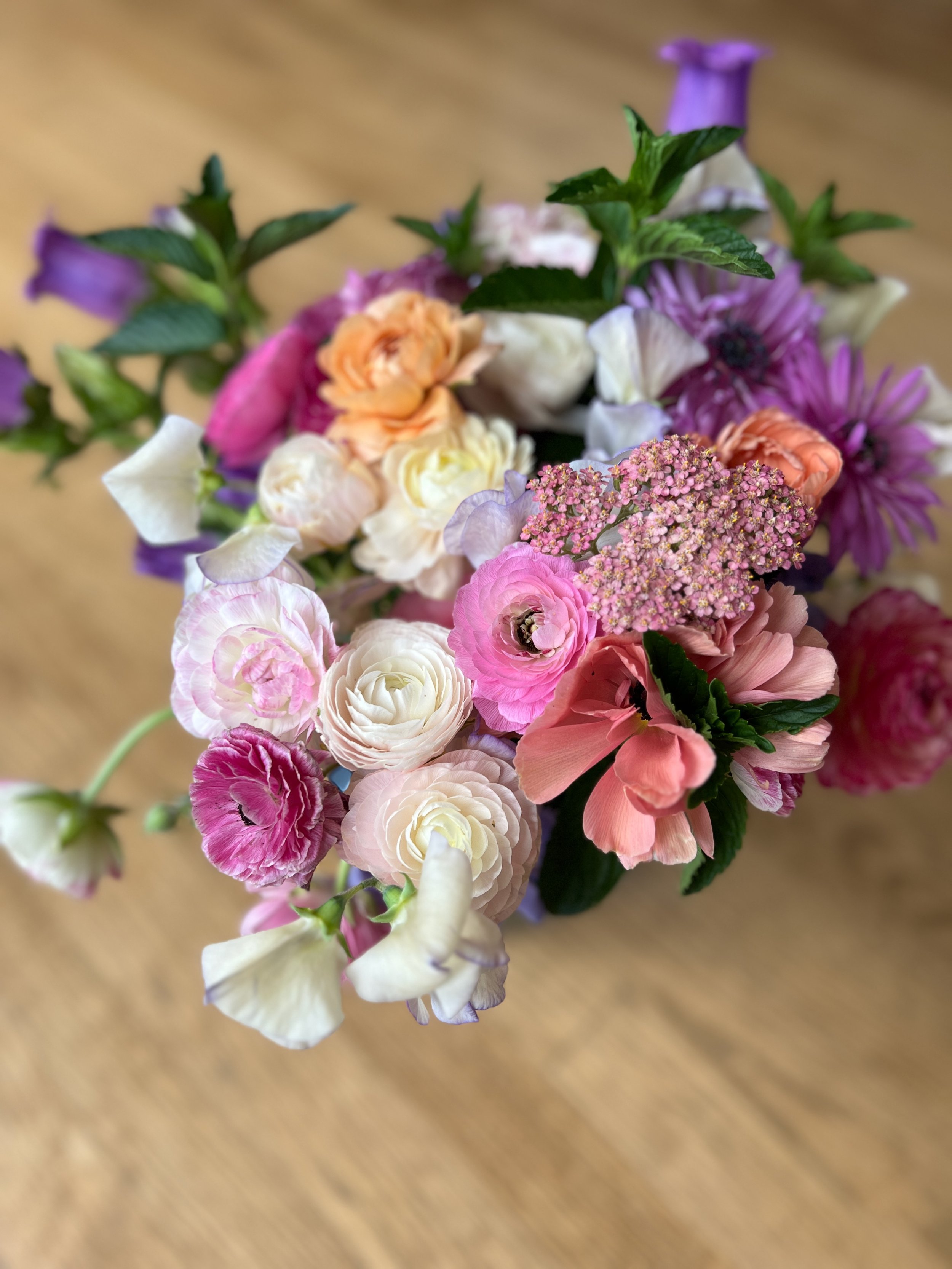What Does a Flower Farmer Do in the Winter?
I often get asked, “what does a flower farmer do in the winter?” It’s a good question. It’s often cold, sometimes the ground is covered in snow, clearly there aren’t any flowers to harvest, so what does a flower farmer do in the winter?
My first thought is a quote I often see bandied about: “Anyone who thinks gardening begins in the spring and ends in the fall is missing the best part of the whole year; because gardening begins in January with the dream,” Josephine Neuse, author of The Country Garden.
My winter has been a little different. In January, my mare died. She was the horse I rode most days. She was the horse I had always dreamed of, well-trained by the two young riders that had her before I did, spirited, but reliable, forward, but obedient, the perfect horse for me. She was one of the rare horses that taught her rider exactly what she needed to learn. She taught me how to be a more effective rider, but she also taught me patience, and I thought we had a few more years together so I could master the lessons she was teaching me.
Temple, eyeing the cross country course at a show.
She died suddenly at the age of 24 likely from an aneurysm, and I immediately felt lost. I was crushed by the absence of my riding partner, but I also felt sorrow in all my happy places, any place that I had grown accustomed to being greeted by her deep whinny and kind and inquiring eyes–the barn, the pasture, almost any place on the farm where we had ridden together. Everywhere that I typically found joy, I felt loss and sadness. My winter dreaming was more wishing she was still here, rather than flower plans. Over the last few years, I’ve learned to recognize grief. I know that my yearning for the impossible will recede and the rhythms of grief and gratitude will wash over me, with little care for which I’m ready to accept at the moment.
With a greater understanding of grief I’ve also learned that there are two things that help me most–writing and growing. I knew what I would be writing about, but getting hands in the soil in the dead of winter is a little more challenging. Luckily there is a lot of growing that gets done in the winter, and the weather gods were kind to me, and gave me a week of warm temps shortly after Temple died, allowing me to get out into the field and do some of the real work that heals my soul.
Here are some of the things a flower farmer gets to do in winter:
Start seeds
One of my seed starting stations.
Early February is a bit too soon to start seeds for most of the cool hardy annuals in my zone (7a). So some of my favorites–strawflower, orlaya, and rudbeckia had to wait a bit, but there are some very slow growing seedlings, lisianthus and eucalyptus, which I started. There are also very cold hardy plants like sweet peas that I can plant out early and cover with frost cloth if I need to. In addition, I’m determined to get some ranunculus this year. The sprouted corms that I planted out in November got decimated by voles, so I’m growing them a bit bigger under lights and hope to get them in the field and under cover this week. They tolerate temperatures down to 27 so I’m hoping to keep them alive until warmer temperatures are here to stay.
A bouquet with some ranunculus that I trialed last summer.
Plan
Some of what I do in the winter doesn’t get me in the field. I’ve spent a lot of time this month figuring out what to grow, and where and what I’m likely to be able to harvest together. In the unpredictable world of nature this can be a challenging activity. Sure the seed packets tell me how many days until a seed is likely ready to be harvested, and the USDA can tell me when I am likely to get the last frost, but no one can tell me which weeks we will be inundated with rains, or whether another snowstorm will shut down any work in the field. Still, I can imagine the best case scenario–the nigella that I planted in the fall will be finished mid-June and then I can use that space to plant another succession of zinnias or cosmos that will be ready later in the summer. Imagining the different waves of flowers truly is one of the best parts of flower farming. In February, I can conjure the perfect, weed-free, pest-free season.
My worm bin
Tend to the worms
A new favorite activity is checking on my worm bin. After procrastinating for some time, I finally got around to setting up a worm bin, which, in addition to one pound of red wigglers, includes aged compost, coco coir, shredded paper, and kitchen scraps. The worms have just started their work, so it is still another couple months before I will have vermicast extract (or worm poop), but I’m very excited to incorporate their castings and judge for myself the benefits of adding their microbial properties to my plants and soil.
It’s been a tough winter, a little too gray, very wet, and too many hours missing my riding partner, but the longer days of February mean flowers aren’t too far in the future. I’m so grateful to the many people who have purchased bouquet subscriptions, and I’m very much looking forward to bundling up some seasonal beauty and sending them out into the world.





